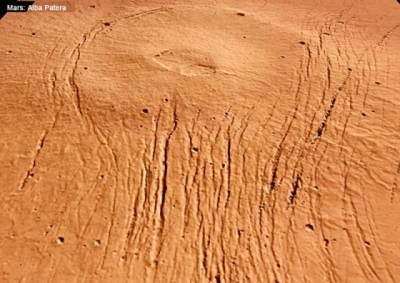
Scientists say there may be mainly two factors that help Martian volcanoes grow enormous.
One, Mars has a weak gravitational pull (which is only about one-third that of the Earth’s) and a thin atmosphere. Magma, or the molten material under a planet’s surface before it becomes lava, contains not only melted minerals but also gases trapped within it. As magma approaches the surface, the effects of low atmospheric pressure helps gas bubbles expand faster. This pushes out huge quantities of hot ash and other debris in a large explosion called a Plinian eruption. The low gravity also makes it easier for magma to collect under the Martian surface in magma chambers, larger and deeper than those found on the Earth. So when a volcano erupts on Mars, there is more lava produced and the low gravity keeps it flowing for longer periods.
Two, Mars does not have any active tectonic plates. The Earth’s crust (along with the upper mantle) is in the form of huge jigsaw-puzzle-like pieces known as tectonic plates. As these plates gradually move, their boundaries (which are points of weakness) may get aligned above areas of the underlying mantle that are hotter than the surrounding regions, permitting magma to move up and form volcanoes. When the plates move again the flow is cut off. In Mars, however, there is hardly any tectonic movement. So lava is able to continuously flow and pile up at a single location.
Picture Credit : Google




